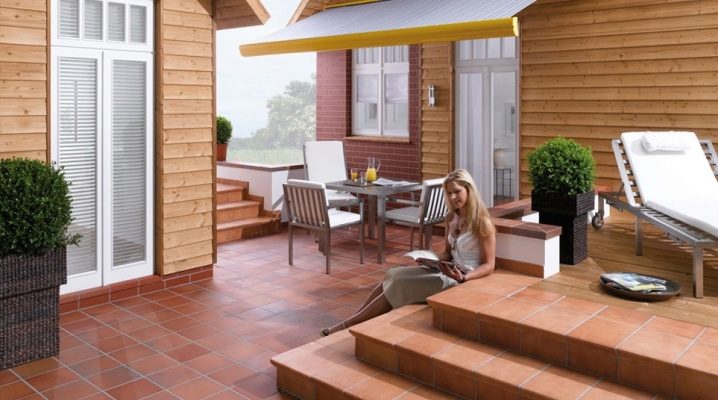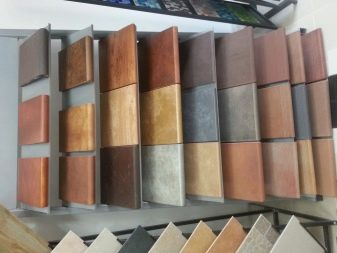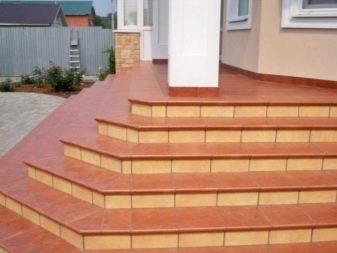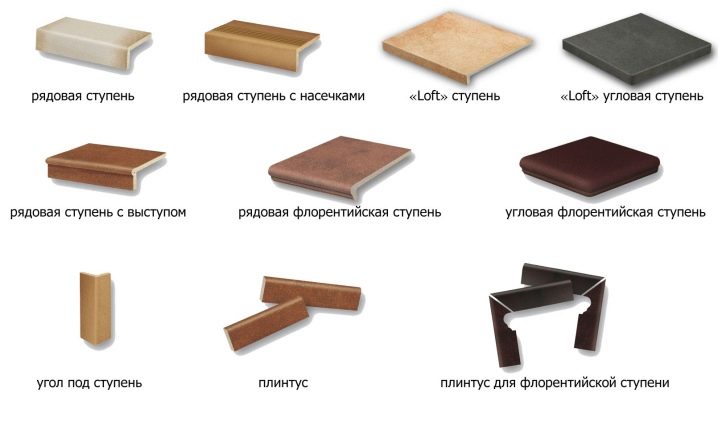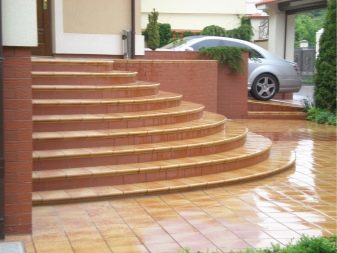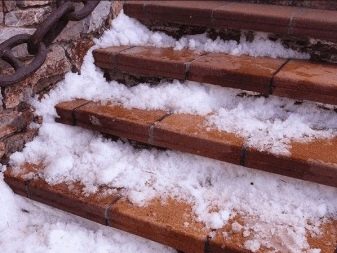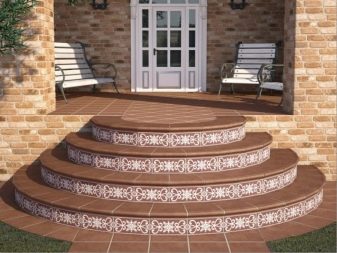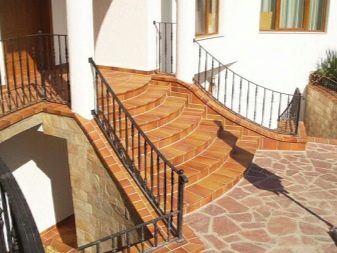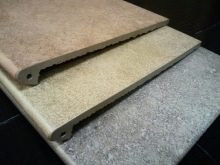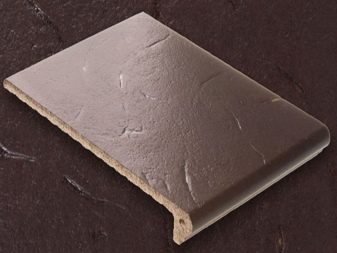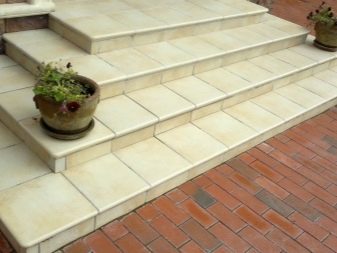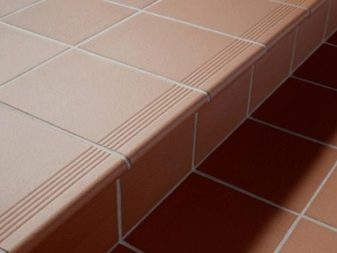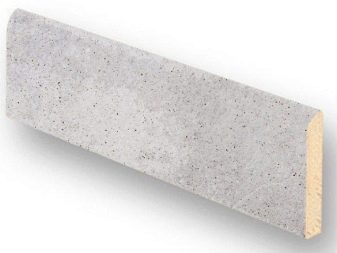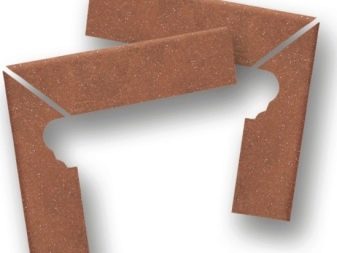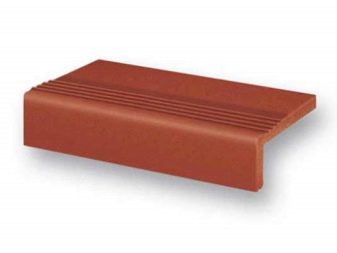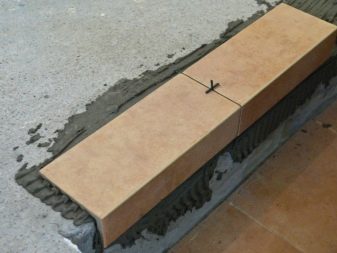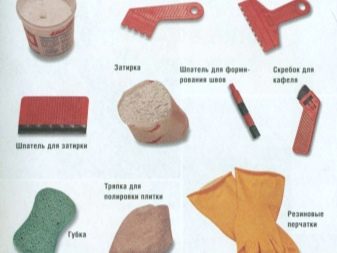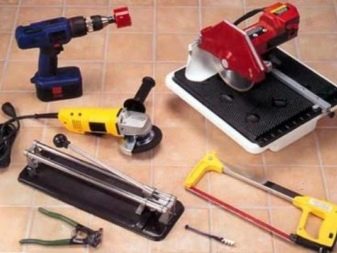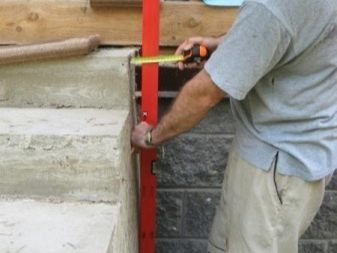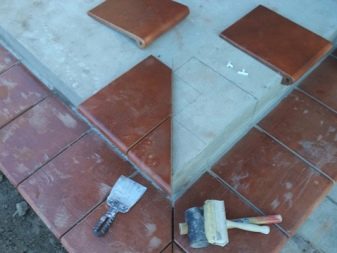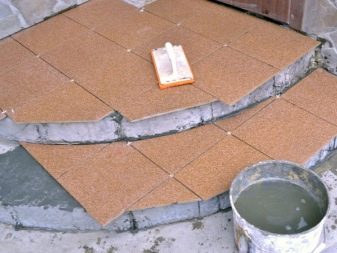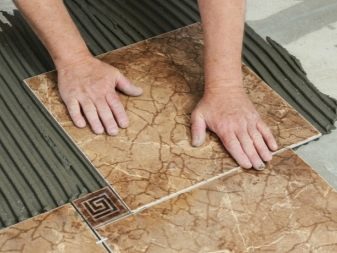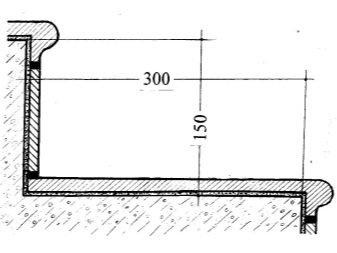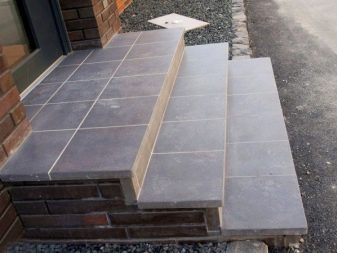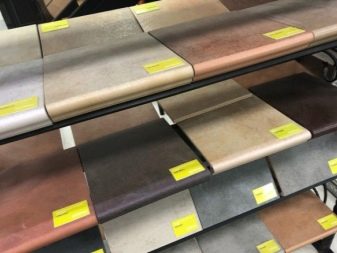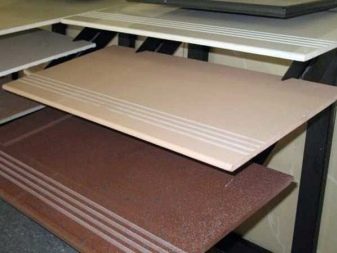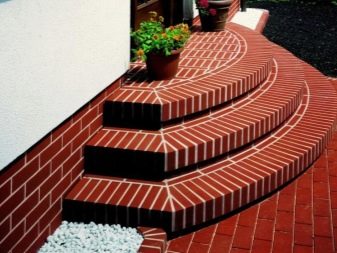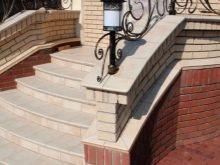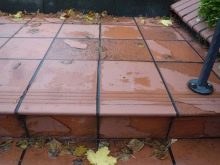Clinker steps for the porch: the advantages and methods of facing
When facing the staircase in front of the masters there is a difficult question about the choice of material. As a rule, tiles are chosen for street steps, however, and sufficient conditions are imposed on it. It must have high strength, wear resistance, frost resistance and anti-slip coating. All of the above parameters correspond clinker tiles.
Special features
The main difference between the staircase and floor tiles is the form. Steps on the street can be both flat and curved shape. Regardless, the edge must be rounded for safety. That is why clinker steps for the porch are produced in three types: for the risers, baseboard and stepped plates with rounding along one edge.The plinth is laid only if the floor in the hallway or hall is decorated in the same way.
Clinker for external steps has many advantages. It has a high level of durability, as for cladding street stairs use the most durable material that can lay the floor in a public place, for example, at the airport. It is almost impossible to damage it mechanically, therefore, the life of the material is very long. Water resistance of products is also a big plus. They do not absorb moisture, which prevents internal deformation.
The brick tile is frost-resistant. This property is ensured by its moisture resistance, because when it gets inside and freezes, water increases in volume and breaks the pores of the material. Such products have the capillary shape of pores obtained by the extrusion method, it is this that contributes to the rapid evaporation of moisture. Products have a high flexural strength (up to 20 MPa), which is very important for dynamic loads.
For cladding street stairs used tiles with an indicator R11 – R13, it provides an anti-slip surface.
Low porous material has optimum adhesion to the surface and holds better than any other material. Among the advantages should be highlighted and the resistance of products to ultraviolet rays, which prevents fading of the surface, even if the staircase at home is located on the sunny side of the courtyard. Decorative elements are resistant to chemicals and acids, so when cleaning and cleaning the porch you can use any means. The only disadvantage of the Spanish tiles, as they are called clinker, is the limited choice of shapes and color palettes. However, while limiting the shades, nothing limits the imagination of the buyer, who can order a certain pattern on the steps to give them an original look.
Species
The tile for steps consists of several elements.
- Prostup. Such a product has a rounded corner to block the joint with the risers. The tread is 30 cm long and 25 cm wide.
- Podstroyenok. This detail is similar to ordinary clinker with imitation bricks.
- Plinth. The element is presented in different forms and is designed for cladding bowstring.
The thickness of the staircase elements varies from 8 to 12 millimeters, but for decorating the street steps, it is recommended to use parts more than 15 millimeters wide, but smaller in parameters, since this option has the best bending load indicators.
Classify steps by form, as well as by purpose.
- Ordinary steps. This option is the simplest and has an edge in the form of a corner.
- With a notch. This type is lined with anti-skid grooves on the outer edge.
- Florentine profile. This is an elegant version of the clinker, it is more complex in shape, but at the same time gives a zest to the entire staircase.
- Corner. The chamfer is cut from both sides, as a result, the staircase with oblique corners looks original.
There are the following types of plinths:
- straight;
- angular;
- figured (divided into right and left, has the original texture);
- corner with profile.
Some manufacturers offer customers and a special balcony lining, designed for laying on a balcony or terrace. These products are often used for facing spans with non-standard design.
Piling
The clinker is designed for lining concrete, metal and reinforced concrete surfaces. Such legibility due to the need to have high strength, as the Spanish tile has a large weight. So, for 1m² there are 15-18 kilograms. Lining works should be carried out only in warm time, as water is used for dilution of tile glue. The temperature for optimal hardening and setting of the mixture should not be below +5 degrees over the next three weeks. In the case of an unplanned cooling, it is recommended to cover the lining with a special film with the vapor permeability function, if this is not done, the products will exfoliate.
The process of laying Spanish tiles on the steps is quite complicated. It is necessary to accurately calculate and mark the place of each part. For work, in addition to the clinker itself, you need a tile adhesive designed specifically for ceramics, a trowel, crosses for installation, an electric drill, a hammer, a glass cutter and two types of spatulas, standard and rubber for grouting. Before laying the parts, it is necessary to prepare the surface to be treated well.Since the clinker tile is not a flexible material, the base of the staircase should be completely flat. And if the new design initially meets all the requirements, then the old base will have to be treated with a concrete screed for leveling. Concrete brand should not be below M200.
One of the requirements for the porch is a slight slope of 1.5–3 degrees to prevent water accumulation. All potholes and cracks must be repaired and the surface must be ground. Clean construction should be cleaned from dust and dirt, and then primed. Before direct laying, it is recommended to lay the tile “dry”, this will help to more intelligently dispose of the material.
It is desirable that whole pieces predominate, but if necessary you can cut up to 30% of the tile.
To begin facing it is necessary from a door. The very first row will determine the subsequent layout and location of the tiles in the other rows. Glue should be diluted strictly according to the instructions, put a layer of a maximum of one centimeter with a special spatula with small teeth. The lines on the back of the tile should be directed to one side.To maintain the exact dimensions of the gaps for joints 8–12 millimeters thick, it is recommended to use crosses for installation.
It is necessary to apply the finished glue during the first half hour, since then it simply loses its properties. After applying to the surface of the composition, clinker is pressed against it tightly, and to remove air, you need to use a rubber hammer, gently tapping it diagonally.
Dock the stage itself with the risers in different ways.
- The first option is overlap, with the result that the step edge will be located above the risers, the gap between them will be 2 millimeters. This method is more common, as it has a neat appearance, and also allows you to revet a metal and wooden surface with a clinker tile, and not just a concrete one.
- The second option of facing is end-to-end, it is possible only on concrete. In this case, the nose rests directly on the vertical part, the work requires an exact fit without the right to make mistakes.
Within a day after lining, you can begin grouting. As a rule, for this purpose cement mixtures or compositions with epoxy resins are used.It is recommended that wide seams be wiped in half with a dry mixture, the thickness of which is determined by the clamping of a small amount in the hand. It should not have a loose texture. Grout produced with a rubber trowel. At the end of all work, the structure should be wiped with a stiff sponge or scraper to remove excess glue and grout. Further, it is covered with cardboard and the process of setting the glue begins.
You need to wait 4–6 days until complete drying, after which you can begin to finish the front sides on the porch.
Cost of
The price of tiles and other components for repair depends on the brand-manufacturer, thickness and appearance. For example, facing the ordinary steps will cost much cheaper than the Florentine. The cost of a standard stage can be from 1900 to 2200 rubles for 1 m², and the Florentine models are estimated at 3300–5690 rubles for 1 m². The price of the work itself on facing the landing with clinker tiles is also not low, since the installation of such material is rather troublesome and time consuming. Working with models up to 60 centimeters in length costs about 700 rubles per linear meter, laying large plates will cost the owners 900 rubles per linear meter of each step.
However, there are several ways to help spend not so much money when buying materials. In the period between October and February in the building stores the lowest prices are due to the low demand for goods during this period and big discounts. If you buy tiles and other things necessary for the work in these months, you can save a lot. Another way involves the purchase of all goods directly in the factory or in the official store of the manufacturer. As a rule, dealers are much more expensive.
Reviews
As a rule, brick houses are revetted in houses in the style of Provence, loft, country and in other stylistic directions. Masonry with imitation of a brick or natural stone is not quite in harmony with the interior in the style of techno or high-tech, and for the classics it is recommended to use more natural materials that will give the environment a refined look. Among the reviews in the network, most users pay attention to the fact that the clinker tiles are frost-resistant. Regardless of the temperature, the steps practically do not freeze over, and even with a sharp cooling after the rain, the ladder is not covered with a layer of ice, which is very convenient not only for children, but also for adults.The material itself is made of very durable raw materials, it can not be scratched or broken. Clinker has a long service life, it practically does not wear out even after many years. The process of laying itself, which, despite all the complexity, is much faster and easier than facing with ceramics or natural stone, is also noted.
For how to install the clinker tile, see the following video.
